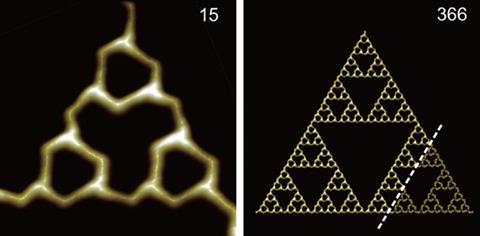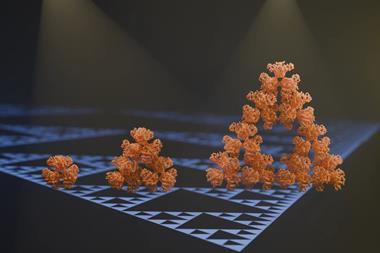Scientists have produced a repeating triangular pattern through molecular self-assembly

From the repeating pattern of a snowflake to the complexity of Saturn’s rings, fractal patterns are everywhere in nature, but as yet they have not been reproduced in the lab. Now, scientists in China have for the first time created a fractal pattern from small molecular components.
First theorised by mathematician Gottfried Leibniz in the 17th century, fractal structures are patterns that are the same, or markedly similar, at every scale you view them. They can be identified in a range of natural features including mountain ranges and coastlines to capillary networks and DNA. One such fractal pattern is the Sierpinski triangle – an equilateral triangle split into a number of smaller triangles. The famous arrangement can be found in man-made structures dating back to the Roman period – such as the tiled nave of the Roman Basilica of Santa Maria in Cosmedin, Italy.
Kai Wu and his colleagues at Peking University, Beijing, recreated the Sierpinski triangle by thermally depositing two aromatic molecular building blocks – 4,4”-dibromo-1,1’:3’,1”-terphenyl and 4,4”-dibromo-1,1’:3’,1”:4”,1”-quarterphenyl – onto a silver surface. The triangle self-assembled through halogen and hydrogen bond formation.








No comments yet